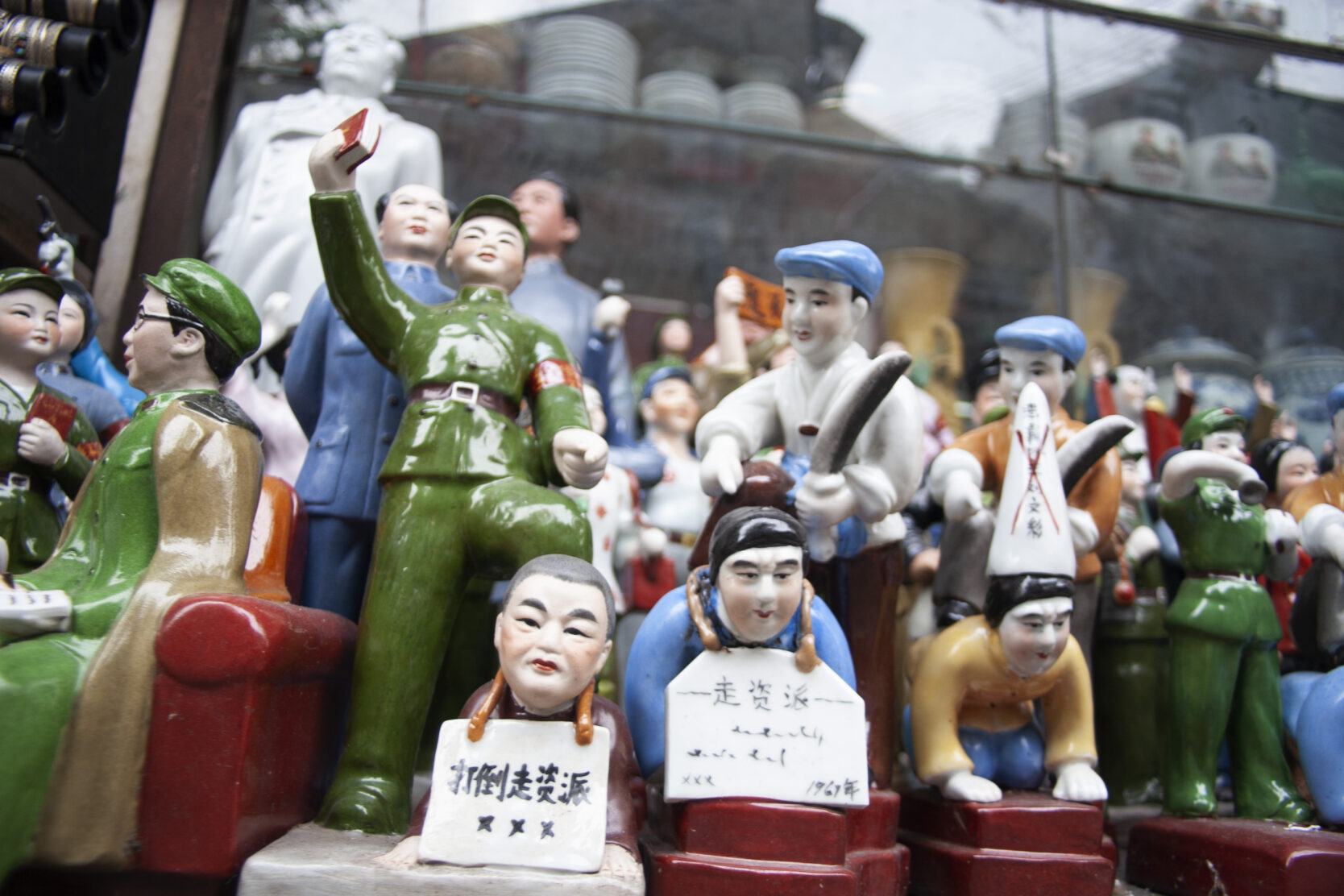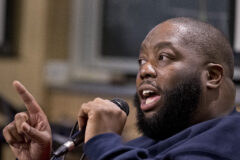“Duncan can’t find the clit,” says a sign held by a man standing in a lecture hall of the esteemed Stanford Law School.
The Duncan in question – Judge Stuart Kyle Duncan of the U.S. Court of Appeals for the Fifth Circuit – waits at the lectern, and waits, as Clit Man and 100-odd more shouters and hecklers make it impossible for him to give his speech.
When he first turned up, he has since described, one protestor let rip with: “I hope your daughters get raped!”
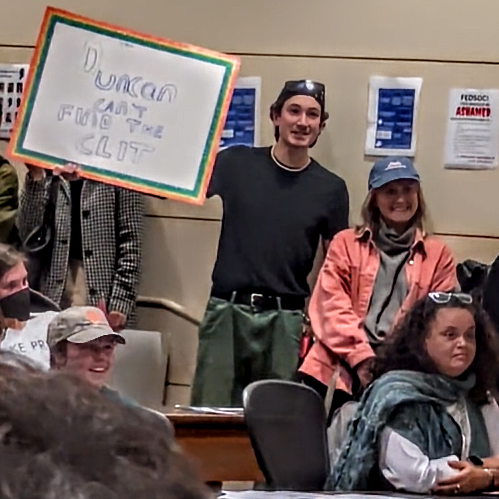
As for the students who invited him to speak (members of Stanford’s chapter of the libertarian Federalist Society), furious flyers posted about campus declare: “should be ashamed”.
The mob’s shout-down of Judge Duncan on March 9 brings into flaming relief the free-speech battle raging at university campuses across the United States.
The Duncan Showdown isn’t the latest, the most destructive, or even at the highest-ranked school, in the storied history of campus freak-outs.
Protestors smashed glass doors and injured a police officer at the University of California, Davis, less than a week later, on March 14. Yale Law School students deployed the hecklers’ veto a year earlier, in March 2022.
Yet Stanford still stands apart. The school is elite: perennially ranked in the top handful of the nation’s law schools; its students culled from the cream; the speaker in question a sitting, Trump-appointed, federal judge one promotion from the Supreme Court of the United States. Then there were the tactics.
“We have not seen anything quite like what happened at Stanford in 22 years of defending the rights of speakers and protestors,” says Alex Morey, attorney at the Foundation for Individual Rights and Expression (FIRE).
“What was really surprising here is the level of aggression that we saw from these hecklers. It’s unlike anything we’ve really seen before.”
It wasn’t just their affront to Judge Duncan’s spatial awareness of genital landmarks. That’s old hat after late Supreme Court Justice Antonin Scalia saw that crass ceiling shattered in 2004 when asked at NYU Law School: “Do you sodomize your wife?”
Instead, the volume and velocity of vitriol reached a new crescendo. Under the guise of counter-speech being free speech, the chorus rolled on. “Liar.” “Scumbag.” “Your racism is showing.” “I fuck men, I can find the prostate. Why can’t you find the clit?”
“Counter speech to an event speaker is incredibly important,” Morey says. “But if the speaker doesn’t speak, there’s no speech to counter.”
“Then we have this intermission,” she continues. “Where the Dean of DEI gets up.”
The monologue of Tirien Steinbach, Stanford’s Associate Dean for Diversity, Equity, and Inclusion, who earns a six-figure salary to “create a space of belonging“, is, for better or worse, a watershed moment.
Steinbach walks up to the podium. Pulls out a paper with some pre-written comments. She’s uncomfortable, but it’s her duty. She tells him that his work has harmed people in the room.
“Is the juice worth the squeeze?” she asks Duncan, leaving the question unanswered, for now, like a cliffhanger. “It isn’t a set-up,” she promises the judge who, by this point, has thrown his hands up declaring it was, indeed, a set-up.
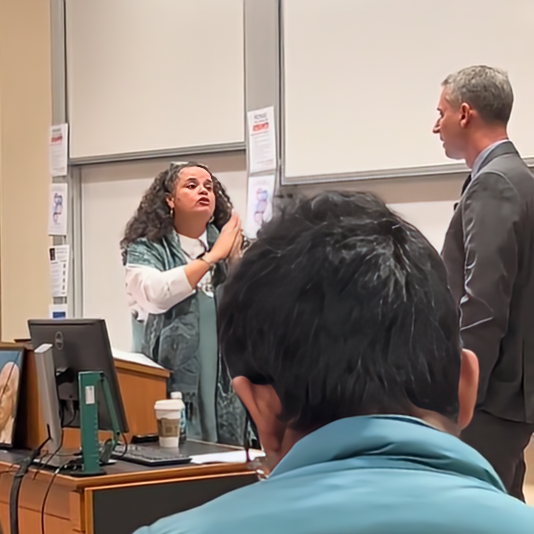
The remarkable moment, captured on camera, is either the vanguard of university-sanctioned censorship to roll over the country. Or the step-too-far that begins rolling it back.
“The students were being egged on by administrators,” says Morey, shocked by what she hopes is not the start of a trend. “What happened at Stanford Law was incredibly illiberal and, with a wink and a nod, endorsed by high-level deans.”
With protesters emboldened, Judge Duncan was escorted from the building by security alongside Tim Rosenberger, the president of Stanford’s Federalist Society chapter. Rosenberger, who invited Judge Duncan to speak, says the protestors have already been “absolutely successful” intimidating other judges who planned to speak at Stanford.
“A number of people who have committed to being with us in the spring are calling me and saying, ‘Precisely what exactly is Stanford doing differently? Because I like the idea of speaking at Stanford. I like the idea of hiring law clerks from there. But I’m not doing whatever that was. I’m a federal judge, not a saintly martyr’,” says Rosenberger.
That fear is spreading: a FIRE survey of 1,500 faculty across the US found university staff and academics more likely to self-censor now than during 1950s-era McCarthyism.
It is bi-partisan: More than 70 percent of conservative-leaning faculty, and even 40 percent of liberal-leaning, fear losing jobs or reputation.
It’s winning: Faculty are increasingly afraid of students, administrators, and each other. Why wouldn’t they be, when one in five younger faculty and one in five students accept violence as a way to stop speech they don’t like.
In the past, when things have gotten really out of hand, Rosenberger says the voice of an apology comes from the administration, but the directly guilty engage in performative contrition. They wouldn’t talk about it, but would act vaguely apologetic if pressed.
“What’s interesting here is, the people most responsible for the mob and the vile comments are gleeful. They feel like they’ve gotten away with it,” says Rosenberger.
“You had one student organization that co-planned the mob sends a mass email saying, ‘this was Stanford Law School at its best’. And they sent that after the dean made her apology.”
The apology to Judge Duncan from the university kicked off a second round of protests, with the Dean of Stanford Law School, Jenny Martinez, met by students standing silently outside her class dressed in black with face masks reading “counter-speech is free speech“.
Neither Judge Duncan nor Steinbach commented to SPIN, but the pair had their say in dueling opinion columns in the Wall Street Journal. The breakthrough of the Stanford meltdown into the mainstream consciousness has been universal. Left or right, up or down, from the New York Times to the Daily Mail and Fox News to CNN.
Whatever happened at Stanford, which Rosenberger says seemed less about Judge Duncan or his rulings from the bench, and more a “ritualistic mobbing of someone for some sort of weird catharsis”, it caught fire.
“Being in the middle of it, it’s really a strange thing. This all went down on a Thursday and I was escorted out of this room by the marshals with the judge and there was just this jeering mob of people,” Rosenberger says.
“It felt very close to things breaking very bad. And then no one cared about it for 30 hours.
“No one cared. And I thought maybe I was a crazy person because I thought this was so horrible and the message from Stanford was nothing. Then all of a sudden, over the weekend, everyone cared. I’m not crazy.”
Much of that can be placed on the early reporting of the Washington Free Beacon, a lesser-known conservative website that broke most of the footnotes later picked up by the corporate press and published here.
Associate Editor Aaron Sibarium, who has reported on campus free speech violations since he was a student at Yale, himself came into the crosshairs with implied legal threats for publishing the images of the astute legal theorists at Stanford.
The Washington Free Beacon received a demand from one of the student protesters to anonymize their face, claiming “California is a two-party consent state”, showing both their hypocrisy, having plastered Federalist Society student identities across campus, and, remarkably for a law student, their ignorance of the law. California is a two-party consent state for the recording of oral communications, not images, only when there’s a presumption of privacy, which there wouldn’t be at a public protest.
“It’ll get worse. It’ll always get worse. The reason it’ll get worse is because these kids are going to graduate,” Sibarium says. “They’re going to go on to occupy very powerful positions in the legal profession.”
None have been publicly disciplined by the university. Steinbach, however, was placed on leave. Martinez, the dean harangued for apologizing to Duncan, announced that Steinbach was out, at least for now, as the university’s first step “to ensure that these events are not repeated“.
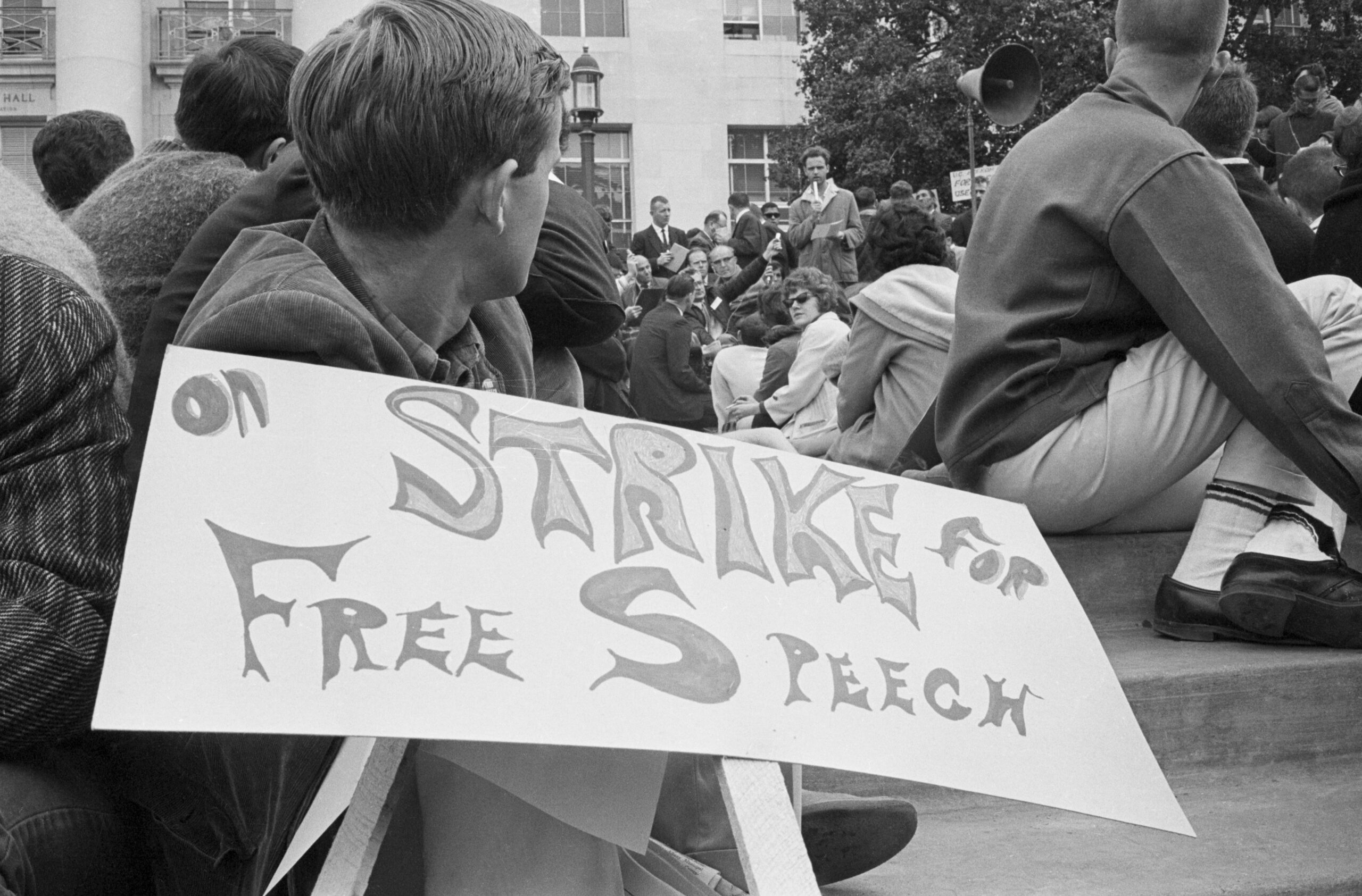
Sibarium published Martinez’s leaked memo announcing Steinbach’s hiatus on the same day Steinbach published her column defending attempts to de-escalate protestors, and “comfort” Judge Duncan, with her now-infamous monologue.
It wasn’t rhetorical, she later explained, referring to the “responsibility that comes with freedom of speech”.
“Consider not only the benefit of our words but also the consequences,” she wrote. “Is the juice (what we are doing) worth the squeeze (the intended and unintended consequences and costs)?”
It’s a question she continues to ask herself as she awaits her fate; halfway to losing a six-figure salary. Federal judges are blacklisting students who attend Stanford from prestigious clerkships. The Law School itself may be “out of compliance” with accreditation standards, and lose federal funding under a complaint by the US Congress Committee on Education and the Workforce to the bar association.
So, was it? Was the Stanford experiment worth it? Worth the, “consequences”? That may depend, in the wash-up, on whose juice just got squeezed.

